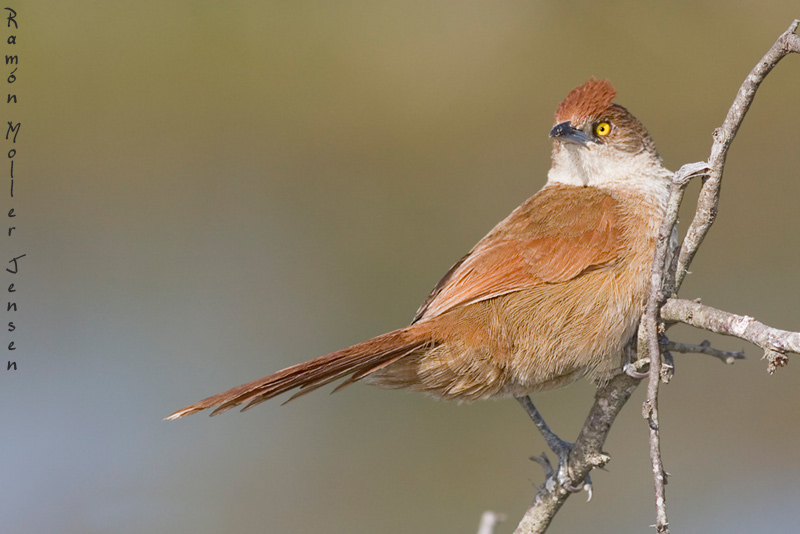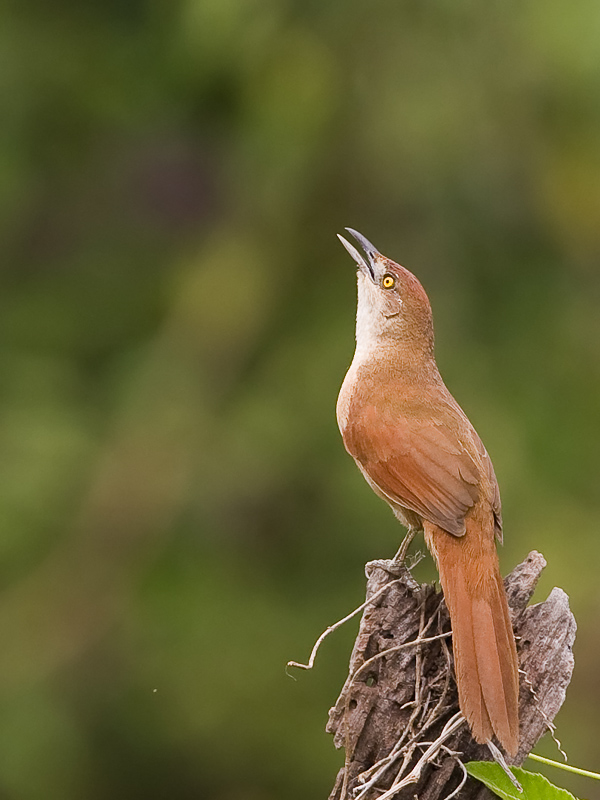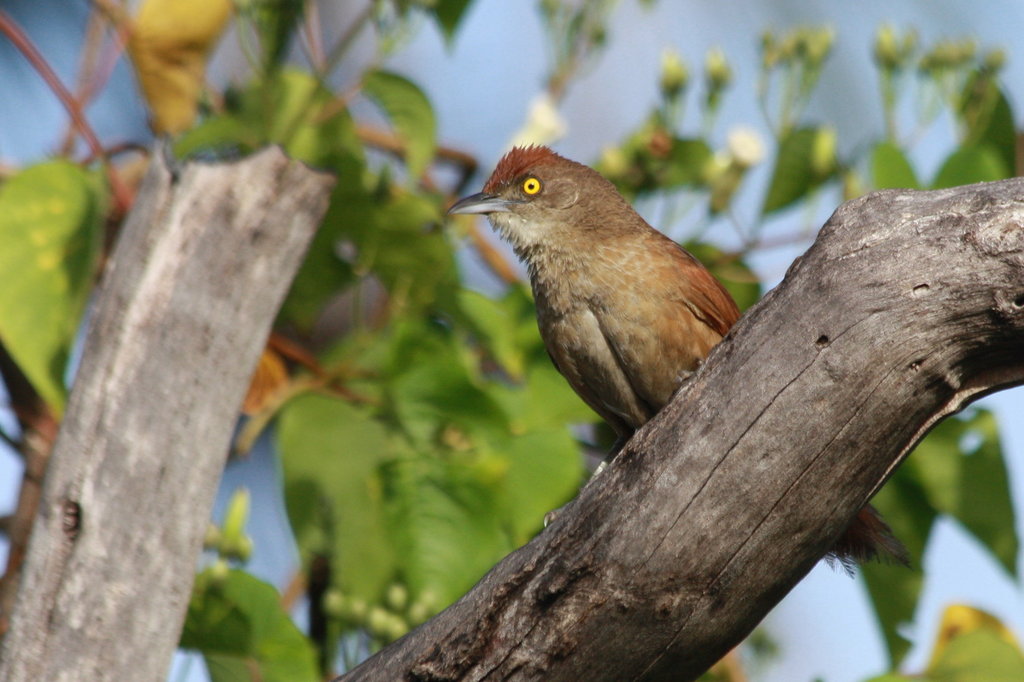
Phacellodomus ruber
SUBFAMILY
Synallaxeinae
TAXONOMY
Phacellodomus ruber Vieillot, 1817.
OTHER COMMON NAMES
French: Synallaxe rouge; German: Rotschwingen-Bьndelnister;
Spanish: Espinero Grande.
PHYSICAL CHARACTERISTICS
Body length is about 8 in (20.5 cm). Bill is short, slightly downcurved,
and pointed. The body is stout, and the tail is long. The
sexes are similar. The back is colored brown, the tail and wings
are rufous, the belly and throat are whitish, the cap of the head
is rufous, and there is a light-brown stripe over the eye.
DISTRIBUTION
A widespread species occurring in Bolivia, central Brazil,
Paraguay, northern Argentina, and likely extreme northern
Uruguay.
HABITAT
Inhabits the undergrowth of humid tropical forest near ponds
and other surface water. Occurs at elevations up to 4,600 ft
(1,400 m).
BEHAVIOR
A skulking bird that occurs singly or as pairs. The song is a
long series of loud, abrupt, accelerating notes.
FEEDING ECOLOGY AND DIET
Forages on the forest floor and at nearby edges of waterbodies
for insects and other small invertebrates.
REPRODUCTIVE BIOLOGY
Constructs a large, conspicuous, bulky, roughly cylindrical nest
of sticks and twigs, often containing several chambers, and attached
to an outer, drooping branch of a tree. Both the male
and female incubate the eggs and rear the nestlings.
CONSERVATION STATUS
Not threatened. A widespread and locally abundant species.
SIGNIFICANCE TO HUMANS
None known.
Photo Gallery of - Greater thornbird




 Animalia Life
Animalia Life